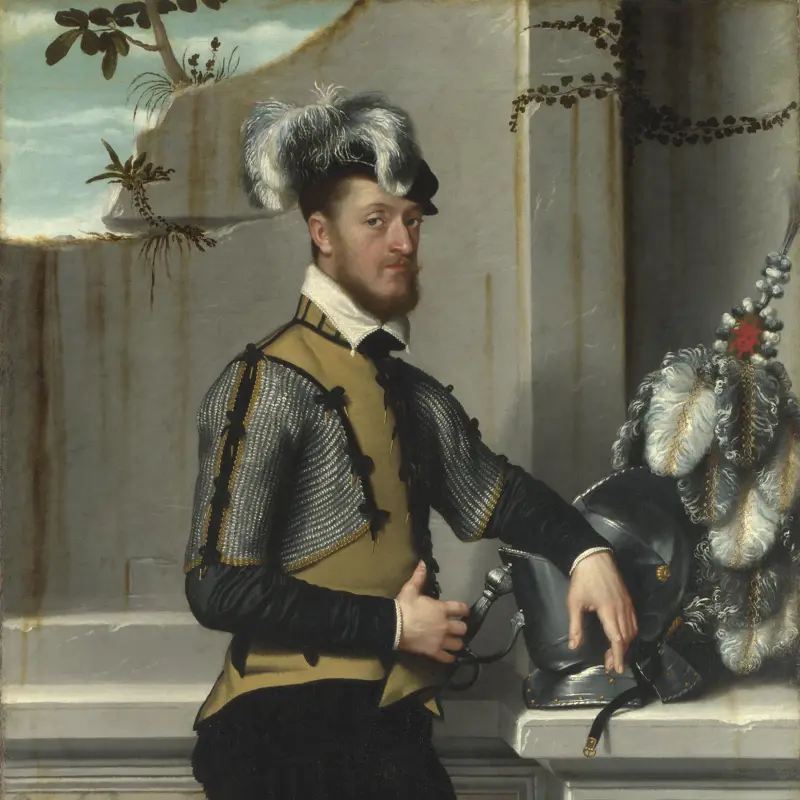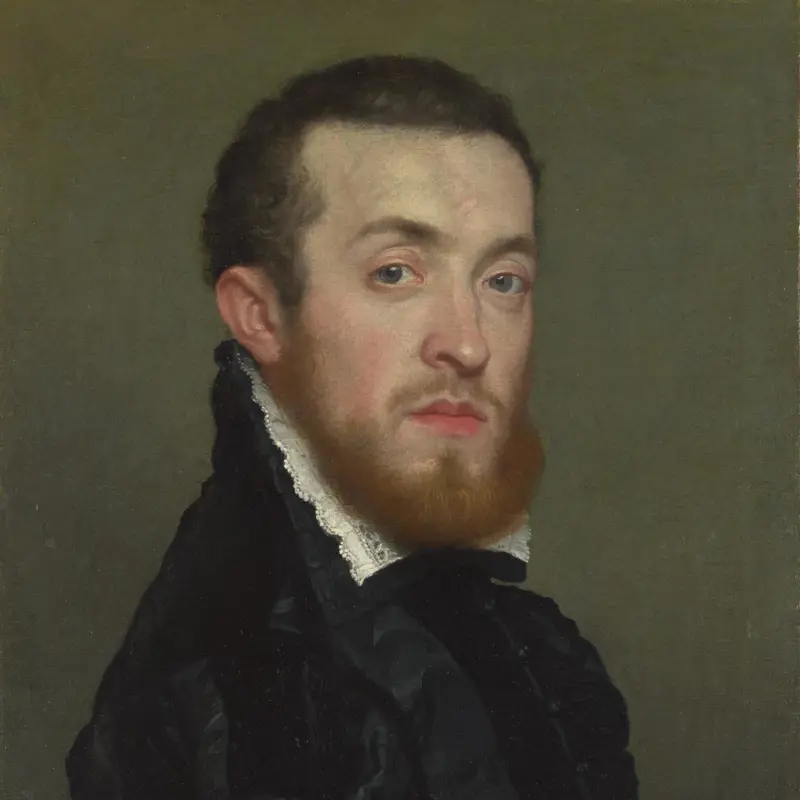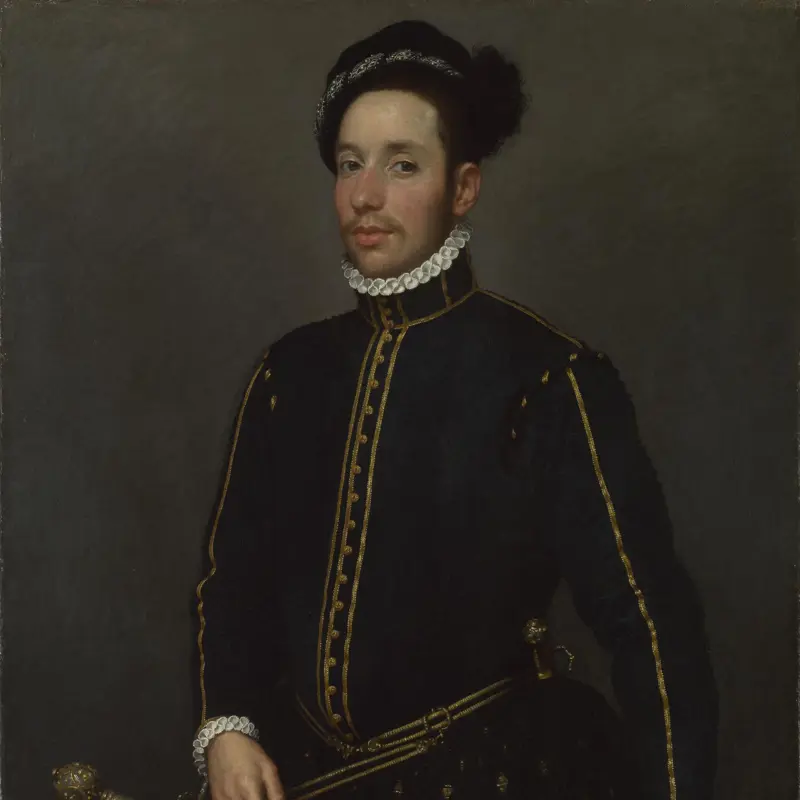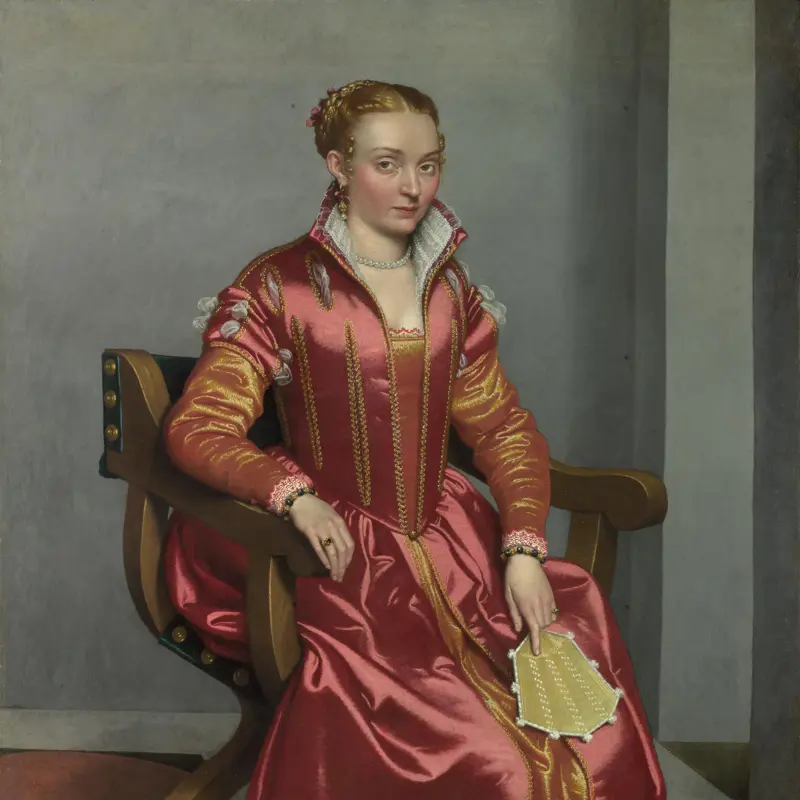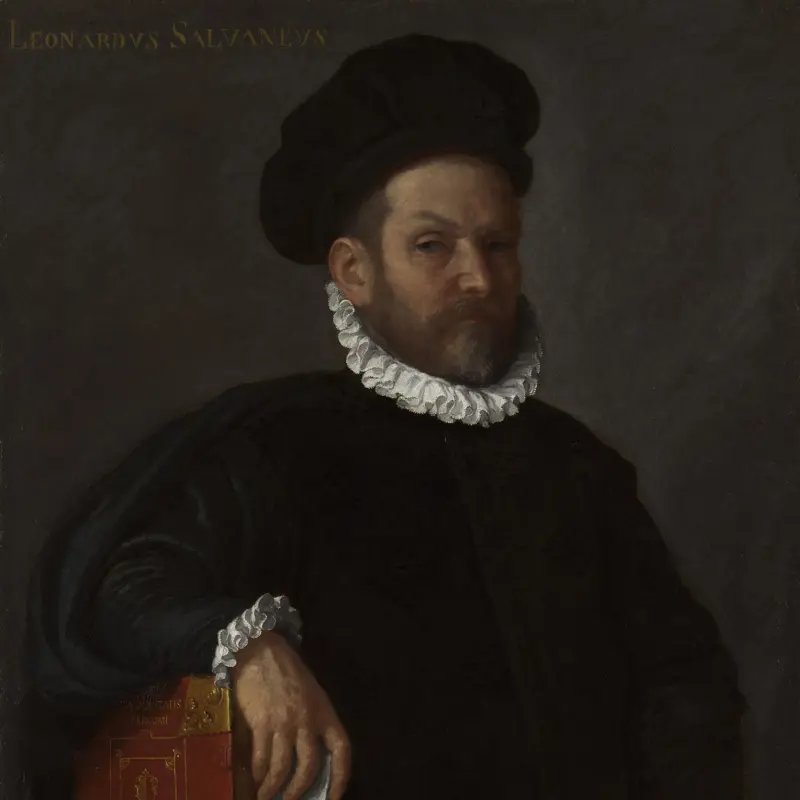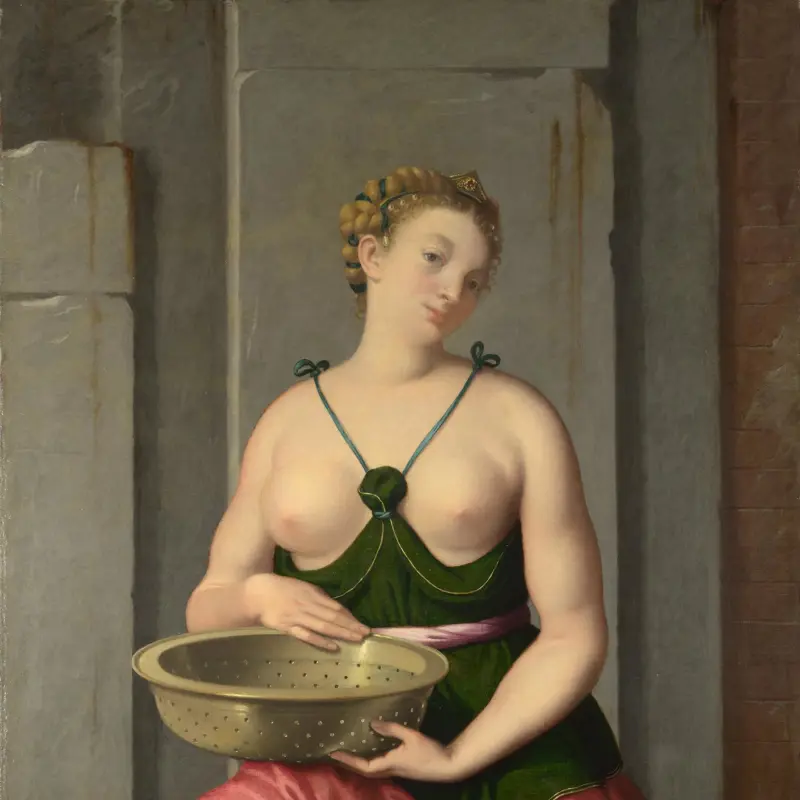Giovanni Battista Moroni, 'Canon Ludovico di Terzi', about 1559-60
About the work
Overview
This portrait is unusual among Moroni’s works in that the sitter doesn‘t look out at us but gazes to the right, apparently lost in thought. He is identified by the letter he holds (a common device in Moroni’s portraits and others of the time), addressed to him as: ’The most reverend gentleman, Ludovico di Terzi, Canon of Bergamo [Cathedral] and Apostolic Protonotary, my most esteemed Lord ~ [from] Bergamo.' His black three-cornered cap is of a type worn by churchmen and his purse suggests his fiscal responsibilities.
Ludovico Terzi studied law, probably at Padua, between 1537 and 1540. He may be the same Ludovico Terzi referred to as a city councillor in Bergamo in 1549 and 1551. He became an apostolic protonotary at an unknown date, and is recorded as a canon of Bergamo cathedral between 1539 and 1582; he died the following year. He seems about 40 here, which suggests the portrait was painted around 1560.
Key facts
Details
- Full title
- Canon Ludovico di Terzi
- Artist
- Giovanni Battista Moroni
- Artist dates
- 1520/4 - 1579
- Date made
- about 1559-60
- Medium and support
- oil on canvas
- Dimensions
- 101.5 × 82.7 cm
- Inscription summary
- Inscribed
- Acquisition credit
- Bought, 1876
- Inventory number
- NG1024
- Location
- Not on display
- Collection
- Main Collection
- Frame
- 16th-century Italian Frame
Provenance
Additional information
Text extracted from the ‘Provenance’ section of the catalogue entry in Nicholas Penny, ‘National Gallery Catalogues: The Sixteenth Century Italian Paintings’, vol. 1, ‘Paintings from Bergamo, Brescia and Cremona’, London 2004; for further information, see the full catalogue entry.
Bibliography
-
1962Gould, Cecil, National Gallery Catalogues: The Sixteenth Century Italian Schools (excluding the Venetian), London 1962
-
2001
C. Baker and T. Henry, The National Gallery: Complete Illustrated Catalogue, London 2001
-
2004
Penny, Nicholas, National Gallery Catalogues: The Sixteenth Century Italian Paintings, 1, Paintings from Bergamo, Brescia and Cremona, London 2004
About this record
If you know more about this work or have spotted an error, please contact us. Please note that exhibition histories are listed from 2009 onwards. Bibliographies may not be complete; more comprehensive information is available in the National Gallery Library.

